Readers! Hey there. We’ve been spending a lot of time in dimly lit bars, tasting our way through dozens of cocktails, all in the name of “research.” Another unsolicited confessional: Despite spending the better part of our young adult life with a drink in hand every weekend, and regardless of the fact that for the last year and a bit we’ve been die-hard, drink-hard, play-hard fans of KL’s best rum bar JungleBird — we actually know nothing about rum. Other than knowing we like it. Especially in daiquiris.
What is rum, anyway? It’s what our Mom drinks with a bit of coconut water… but what is it, actually?
To the rescue came the owner of JungleBird (one of Asia’s “50 Best Bars”), Appleton Estate and Angostura-winning bartender, rum lover, and possessor of encyclopedic rum knowledge — Joshua Ivanovic.
The Basics
First things first: There are sundry iterations of the sugar cane alcohol that are processed differently, look different, taste different, and smell different — while still all being considered “rum.”
What must be constant is that they are made from 100% sugar, be it either cane juice, syrup, or molasses. They can’t be distilled to over 96 units of alcohol by volume (ABV), nor can rum be anything under a 37.5 ABV at bottling. No flavorings added, so, Malibu lovers — we hate to break it to you, but that’s not actually rum.
Yeast is introduced into the mix, and it can be naturally occurring or not — and from there, flavors develop in the form of compound chains.
Rum comes to you in three categories of production methods, each greatly affecting the flavor of the resultant tipple.
There’s pot still distillation, which will often give you a heavier rum, with deeper flavor components; there’s continuous, multiple-column stills, which can produce both heavy and light rums, and then there are rums that are made blending the two techniques.
Still with me? Good. Have a drink, and we’ll continue.
The Upper-Level Basics
Typically speaking, there are three main styles of rum. Spanish-speaking countries in Latin America tend to produce light rums, made in column stills. They often use molasses as their base.
English-style rums, made in ex-British colonies like Jamaica and Guyana also use molasses as their base, but are often blends of the two different distillation styles.
Agricole is the rum made in the French Caribbean, including Martinique and Guadeloupe, and is vastly different from the former two versions in that it is made using fresh cane juice. One whiff and you can smell the grassiness on your nose.
To further confuse you, each country has their own DOP laws that separate the rums from the rum-nots.
Fascinated, our eyes widened when Josh brought out nearly a dozen rums for us to try. It was 2pm on a Friday. We still had articles to write. But in the name of all things investigatory, we poured ourselves some sparkling water and got to tasting.
Spoiler alert: Of all the gin-joints in all the world that we’ve crawled into, nothing quite blew our mind like tasting that rainbow of rum. Read on to see just how weird and wild it can get.

Green Island: Mauritius

The first rum we tried was a column still, molasses tipple that is 100% un-aged — an anomaly when even mass market brands like Bacardi will even use aged rums. The difference is palatable, swiveling it in our mouths, it has a burning dryness, with a grassy citrus finish.
Josh shows us how to capture the unique “bouquet” of each bottle by turning the empty glasses on a napkin, and waiting for the alcohol to evaporate. We took another whiff — grassy, and nutty.
USE IT IN: Daiquiris, mojitos — it goes great with mint and lime
Havana Club: Cuba

Hello, bottle of our youth, stage right in our family’s liquor cabinet, and arguably one of the first alcohols we knowingly had a sip of — it’s been awhile.
An archetype Latin rum, it’s column distilled and unfavorably dismissed by more refined palates as a cliched choice. It’s a three year blend, which is to say that it’s a blend that averages about that number, or plus a couple more.
Straw colored from the casks it’s aged in, it’s sweeter than the Green Island, with a little more depth.
USE IT IN: Mojitos, a Hemingway-inspired daiquiri, a classic rum & coke
Diplomatico Planas: Venezuela

An English-style rum that’s blended using not one, not two, but three different distillation styles — with a batch kettle being thrown into the blend that averages about six years in age. It’s charcoal filtered, giving it a deceptively clear appearance, but it’s flavors are rich. Butter. White chocolate. Vanilla from the white American oak barrels that it’s aged in. It’s the house pour at JungleBird because it’s so versatile, and apparently has been featured in countless daiquiris Coconuts KL has consumed.
On a side note: Are daiquiris the world’s greatest cocktail? We’re pretty certain they are.
USE IT IN: White negroni, daiquiri (duh)
The Real McCoy: Barbados
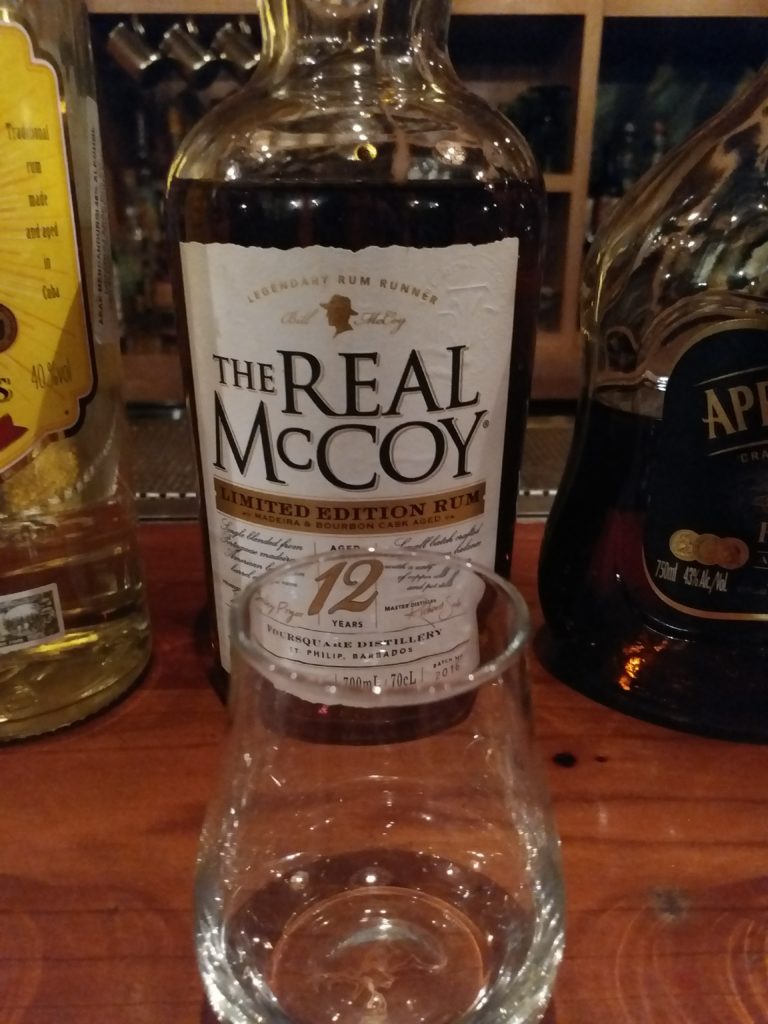
The Real McCoy is a special rum — where it’s made is often referred to as the “home of rum,” as it has the world’s oldest working distillery at Mount Gay. Its rums are produced by a man of mythical proportions called Richard Seale. His great-grandfather founded Four-Square Distillery, which many consider to be the best in the world, and he is the brand’s master blender and distiller.
Here comes the first of the rums that we tried that turned the corner into something beautiful, dark and stormy in our mouths. The 12-year blend is finished in old Madeira wine and bourbon casks and the flavors from the wood seep deep into the soul of this rum. It smells like stone-fruits — candy-like, almost. The woody richness brings out subtle coffee hints. Is that toffee? We can’t tell.
There is no burn when drinking this baby — it is pure smooth, dark velvet flavors. Our mind blew a little, but this was the tip of the iceberg.
USE IT IN: Neat. Don’t mess with the best.
Appleton Estate: Jamaica
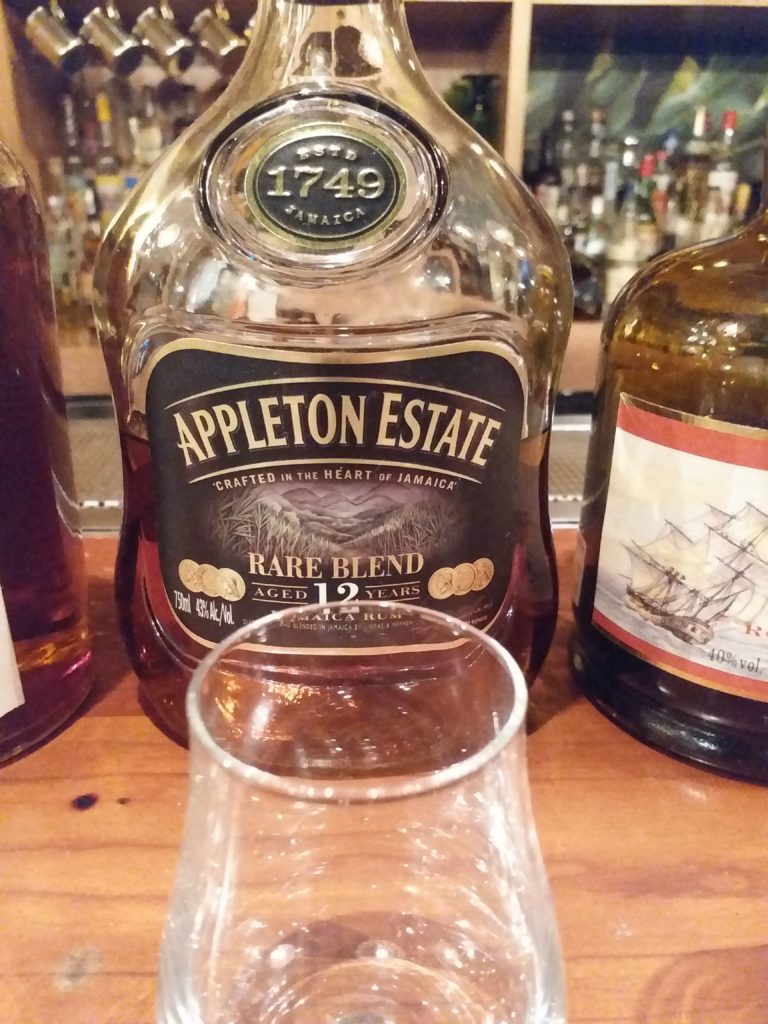
Our dark and winding rum road took another turn when we tried this Jamaican rum. A mix of multiple column and single pot distillation, Josh tells us that this is actually his favorite rum of all time.
It’s blended by a legend in the industry, Joy Spence, and all of its ingredients come from a micro-climate on the island within the Nassau Valley from a single estate. This rum will hit you with a bouquet you can’t identify, and are not sure you’ve ever experienced — it’s a characteristic of Jamaican rum referred to as hogo, a funk. This funk comes from a longer fermentation time producing more esters, and that certain je ne sais quoi you’re unlikely to have ever encountered.
At 43% alcohol for export, many Jamaicans wouldn’t dream of drinking something with such a low content, but for the uninitiated, it truly is something remarkable on the palate.
USE IT IN: Sazerac, Mai Tai, Old Fashioned, or simply, neat
El Dorado: Guyana

Guyana, an ex-English colony had long history of rum making, with distilleries teeming throughout the country. It still has the world’s only working wooden stills — three to be exact — with each ranging in age from 150 to 200 years old.
El Dorado makes their rum using a molasses base from sugar collected on the banks of the Demarara river, distilling it through wooden pots and copper column stills. Sugar is added to round out the flavor. It’s a beautiful rum — toasty, with caramel corn, chocolate, and toasted nut flavors coming through.
We wrote in our notes: Would want life to smell like this. The good life.
USE IT IN: Chilled, with an ice cube to dilute
Forsyths WP 502: Jamaica

Our minds reached the pinnacle of rum-induced amazement when we tried Forsyths. Fermented for three months, it has 502 in its name for the 502 esters present in the blend. It’s funk beyond funk, Jamaican hogo at its best.
With a 57 ABV, and from a single estate, it takes like nothing we had ever tried before. It smelled like rocket fuel made with overripe bananas. Stop what you’re doing, and don’t order that daiquiri we initially spoke volumes of — go to JungleBird, and just try this. Once, at least. You owe your taste buds and brain a little mind-trip, and this is an incredible way to do it. Bananas. Ok, we’ll stop now.
USE IT IN: Neat
Yaguara Cachaça: Brazil

Cachaça, despite being made using sugar cane as the base, is not considered a rum by Brazilians; however, many importers treat it as a rum sub-category.
Made using boiled down sugar cane juice, it’s a lot lighter in alcohol content, ranging anywhere between 38 and 48 percent. It’s aged in local woods like amburana, jequitibá, amendoim (purpleheart), balsam, ipê, freijó, eucalyptus, castanheira, each giving it a unique flavor and Yaragua Oro, “gold,” hits you with honey and candy notes immediately. A second hit brings out a faint smell of gingerbread. Suddenly this Brazilian nectar smells like Christmas to us, and we wonder if we should get a bottle this year to change up the holiday spirits a bit.
USE IT IN: Neat, caipirinha
Clairin Sajous: Haiti
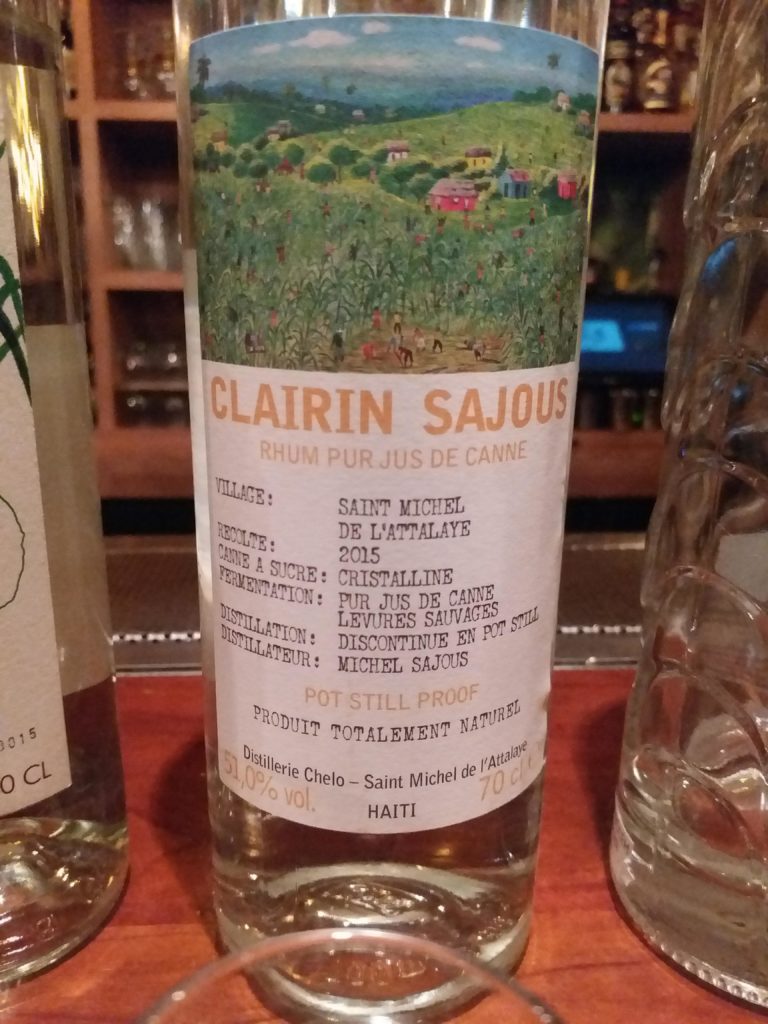
Clairin is the local spirit you find in Haiti. Every dive has a cup, usually priced at less than 50 cents. It’s brewed in the middle of the fields that grow the cane it’s made with, in homemade stills. When you smell it, you immediately understand what it is: A drink meant to have after a long day of working the land. It smells like an Italian grandfather’s homemade grappa, or the sundry eaux de vies you find throughout Western Europe — unapologetic, alcoholic, without frill or fancy. The kind of thing you spike your coffee with at the beginning, or end, of a long day.
Unfiltered, and made using natural yeasts that occur during the fermentation process, it possess unreal aromas — honey, earthy, like something taken straight from the land. The next time we had a cocktail, we ordered a very Haitian ‘Ti Punch (petit punch — lime, sugar) made with clairin, and the favors felt fresh, clean, different. Highly recommended.
USE IT IN: Neat, ti punch, blended daiquiri
Canne Grise: Guadaloupe

An unaged, French-style rum from the island of Guadaploupe, it’s made in the agricole style, using freshly pressed cane sugar. One whiff and we were hit by how incredible it differed from a the others — citrus-y, herby, earthy. You could taste the cane and the grass.
After the alcohol evaporated, the smell that lingered in the cup hit us with the fumes of familiarity: Pandan. Crazy.
USE IT IN: Neat, ti punch, blended daiquiri
Plantation: Bottled in France using rums from around the world

Bonjour, bbz. Plantation rum started in the 90s, after a French Cognac producer set out to find the best rums in the Caribbean. The brand has grown to great fanfare, and in 2012, Plantation was awarded the master-blender award in the rum “World’s Best” — other awards follow, and to put a long story short: It’s now a very popular and trendy brand.
With good reason: The O.F.T.D., at 69 ABV, was absolutely delicious. Blended by the kings of the rum world (master blenders), it’s made in the style of an over-proof rum for yester-years, when rum runners were shipping booze and gunpowder between crown and colony. Made with rums from Jamaica, Guyana and Barbados, it is wonderful, smooth and rich. Just the kind of amazing blend that you would expect the best mixers in the world to devise.
We drank it all.
USE IT IN: Neat, or as modifier in cocktails to give drinks a backbone and flavor
Addendum
How wild was it? Have a look at our notes, from first cocktail, to last. If strong language offends you, please look away now.
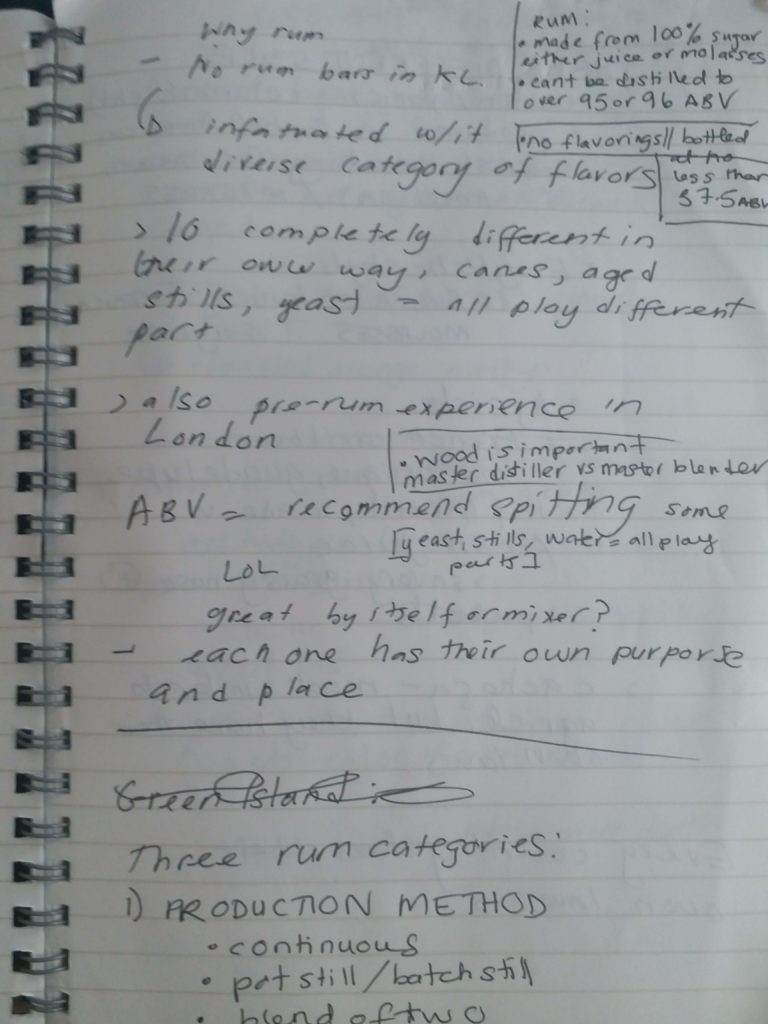
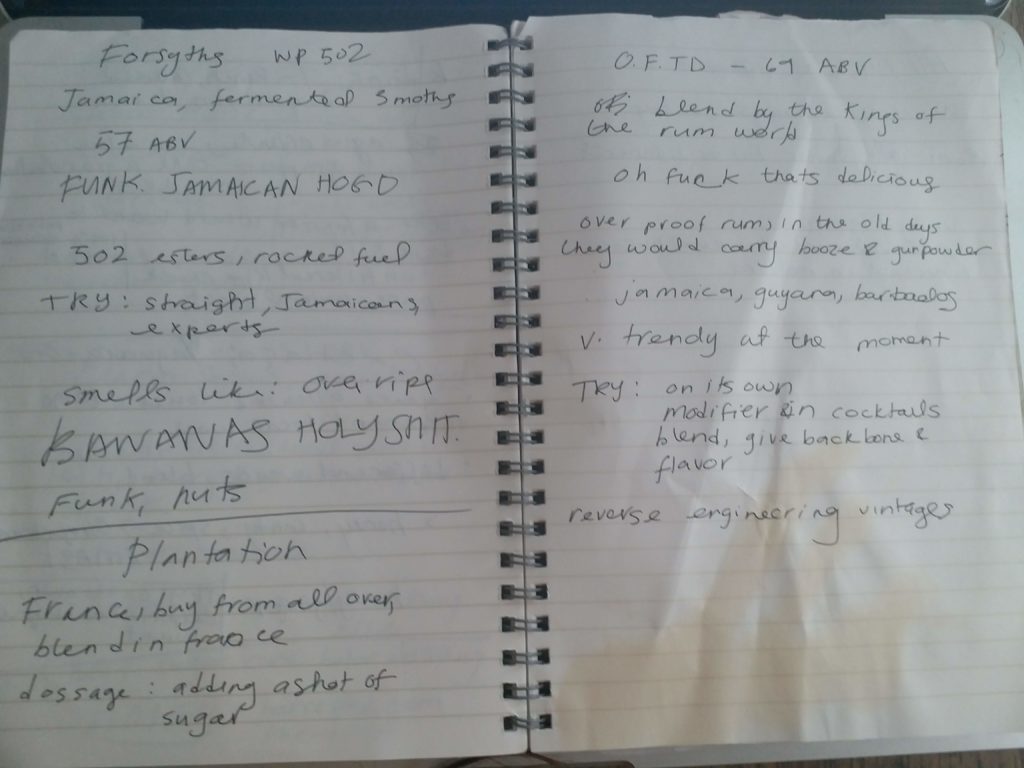
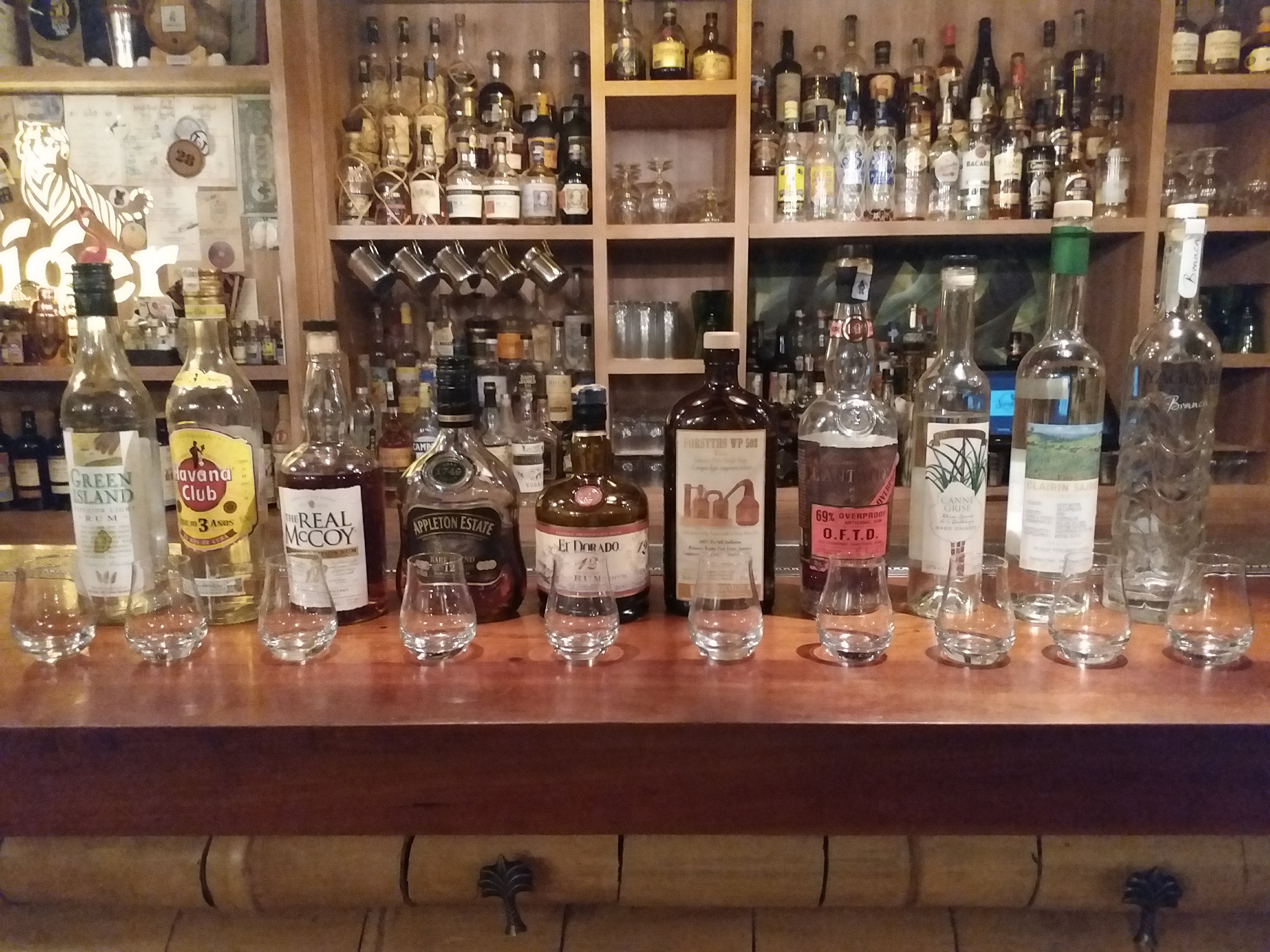




Reader Interactions